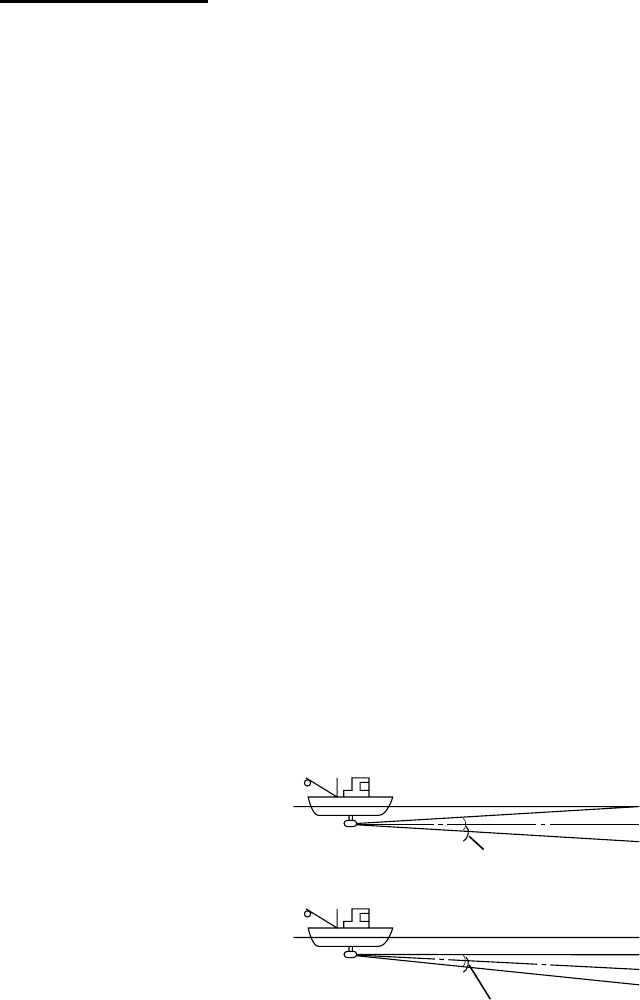
2-7
Points to consider
Normally, a vertically distributed fish school is a better sonar target than the bottom, because it
reflects the transmitted pulse back toward the transducer.
In case 3, both fish schools “a” and “b” are presented. Generally speaking, however, midwater
fish schools tend to be larger than bottom fish schools and they are often displayed near the
bottom on the display.
It is difficult to detect bottom fish when they are not distributed vertically.
2.6.3 Tilt angle for surface fish
Sound emitted from the sonar transducer forms an oval-shaped beam with a width of
approximately 12° (for 60 kHz transducer at –3 dB) in the vertical direction (vertical beam width).
The tilt angle is indicated by the angle between the center line is parallel with the sea surface
and one half of the emitted sound goes upward, toward the sea surface.
This causes one half of the emitted sound to be reflected toward the transducer and displayed
on the screen as sea surface reflections. When the sea is calm, since the sound is reflected just
like reflections become negligible.
However if the sea is not calm enough, they will become dominant and interfere with
observation of wanted echoes. To minimize these sea surface reflections and to search fish
schools effectively, the tilt angle is usually set between 5° and 6° so the upper portion of the
beam becomes almost parallel with the sea surface. When the sea is rough, the tilt angle is
slightly increased to lessen the affect of sea surface reflections.
Tilt angle 0°
Sea surface
Tilt angle 5-7°
Sea surface
12°
12°
Figure 2-8 Tilt angle


















